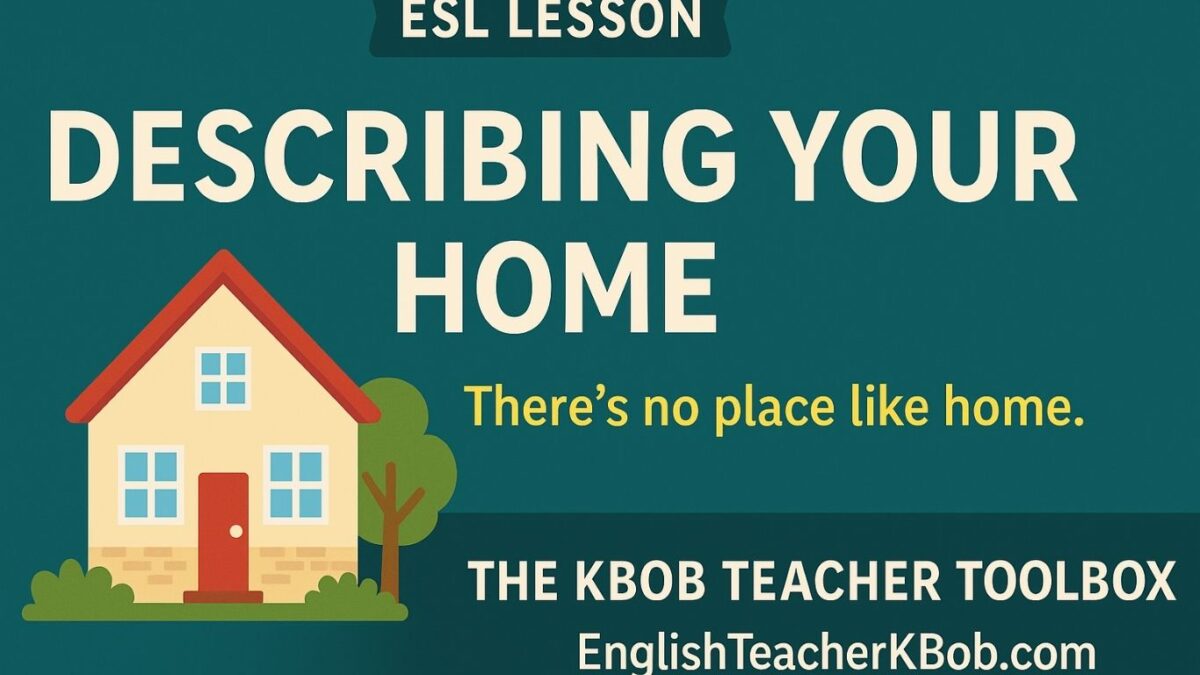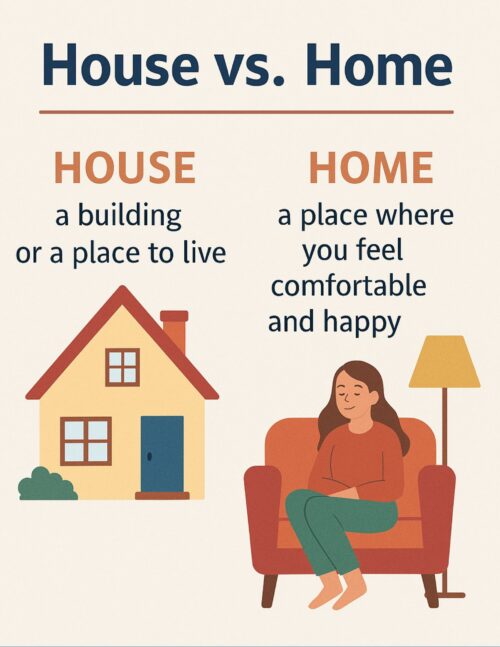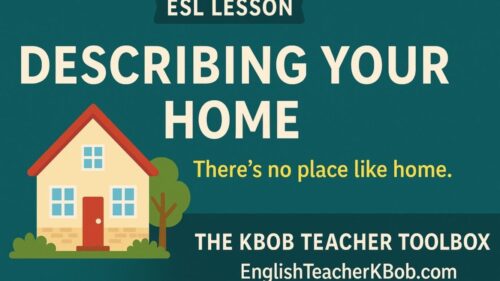Learn how to describe your home in English. Free worksheets, song activity, and lesson plan included.

Affiliate Disclosure: Guess what? When you click and buy through our links, you’re doing more than improving your game. You’re supporting us in a way that doesn’t cost you extra but helps us keep bringing you the best drills and tips. It’s a slam dunk for both of us!
Table of Contents
- How can I describe my home in English?
- Vocabulary: Rooms & Furniture
- Grammar: There is / There are
- Listening Practice: “Our House” by Crosby, Stills & Nash
- Speaking Activity: Real Estate Role Play
- Writing Prompt: My Home or Dream Home
- Download a Free Sample Worksheet
- Infographic: House vs. Home
- Want the Full Lesson Plan?
How can I describe my home in English?
Start by using simple vocabulary for rooms, furniture, and objects. Use phrases like “There is a sofa in my living room” or “My kitchen has a table and chairs.” Beginners should focus on clear, basic sentences to build fluency and confidence.
Vocabulary: Rooms & Furniture
To describe your home, you’ll need words for places and objects:
- Rooms: kitchen, bedroom, bathroom, living room
- Furniture: bed, table, chair, sofa, lamp
- Types of Homes: house, apartment, mobile home
Want to learn these words in real conversations? Try EnglishClass101 to see and hear them in context.
Grammar: There is / There are
Use “There is” for one item and “There are” for more than one:
- There is a bed in the room.
- There are two windows in my kitchen.
Need extra grammar support? Rocket Languages has complete modules to help you practice these patterns naturally.
Listening Practice: “Our House”
This classic song is great for practicing home vocabulary and rhythm:
You can download our free gap-fill activity below and listen for key words.
🟨 Pro Tip: Listen with subtitles on. Repeat phrases to improve pronunciation.
Speaking Activity: Real Estate Role Play
Practice speaking with a partner:
- One person plays a real estate agent
- The other is looking for a new home
Want to practice with a fluent speaker? Use italki to connect with a real teacher online.
Sample lines:
- “How many bedrooms does it have?”
- “There is a big kitchen and a small bathroom.”
Writing Prompt: My Home or Dream Home
Write 4–5 sentences about where you live or the home you’d love to have.
- What kind of home is it?
- How many rooms?
- What do you like about it?
Use Mondly to expand your vocabulary and describe your dream home with confidence.
Download a Free Sample Worksheet
Click below to get a sample worksheet from the full lesson
Infographic: House vs. Home
A house is the building. A home is the feeling. Use this infographic in your lesson to show the emotional difference:

Want the Full Lesson Plan?
Our full 90-minute no-prep ESL lesson includes:
- Picture Dictionary
- Worksheets
- Listening Activity
- Grammar Guide
- Quiz + Role-Play Cards
- Infographics + Covers
Download the Full Lesson on TPT
Final Thoughts
Your home is one of the best topics to start with when learning English. It’s personal, practical, and easy to talk about. Try the lesson, sing the song, and describe your home with confidence!
What about you?
How would you describe your home in English?
What do you think about this lesson? Was it helpful? Do you like it?
Share with us in the comments!
I’d love to hear from you. I always reply
#AdultESL #LearnEnglish #ESLLesson #EnglishForBeginners #DescribeYourHome #ESLWorksheets #ESLTeacherResources #NoPrepLesson #ESLListening #RealEstateRolePlay #ESLVocabulary #EnglishWithMusic


A house is just a place to live, but a home—that’s where love, memories, and peace truly reside. It’s the kitchen where meals are shared, the living room filled with laughter, and the bedroom that offers quiet solace. This simple, everyday beauty is where my heart feels at rest.
Learning the difference between a house and a home has been a powerful reminder of how deeply language connects us to our feelings and experiences. It’s not just about words; it’s about the emotions and memories tied to where we live. This lesson made the learning process more personal—and even fun, thanks to a great song!
Hi Linda, thanks for your comments. My experiences with houses and homes is extensive. I’m glad it resonated with you.
KBob